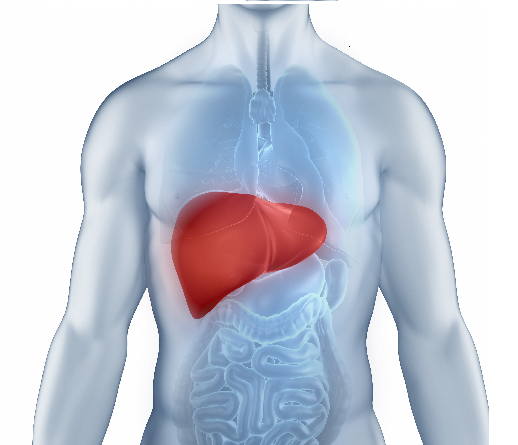Hypocalcaemia: Symptoms & Causes

Calcium is an indispensable mineral essential for various bodily functions, including bone health, muscle contractions, nerve transmission, and blood clotting. When the level of calcium in the blood falls below the normal range, a condition known as hypocalcaemia occurs. This article will explore in detail what hypocalcaemia is, its causes, symptoms, diagnosis, and preventive measures.
What is Hypocalcaemia?
Hypocalcaemia refers to a deficiency of calcium in the bloodstream. Calcium, a mineral crucial for bone health, muscle contractions, nerve transmission, and blood clotting, is predominantly stored in bones and teeth. However, a small amount circulates in the blood, tightly regulated by the body.
When calcium levels dip below the typical range (usually 8.5 to 10.5 milligrams per deciliter), it disrupts normal bodily functions, leading to various symptoms. Based on the degree of calcium deficiency, hypocalcaemia can be graded as mild, moderate, or severe, with more severe cases presenting with more intense symptoms.
What are the Causes of Hypocalcaemia?
Several factors can contribute to the development of hypocalcaemia, including:
- Hypoparathyroidism: This condition occurs when the parathyroid glands, which regulate calcium levels, do not produce enough parathyroid hormone (PTH).
- Vitamin D deficiency: Vitamin D is vital for calcium absorption from the gut, and its deficiency can lead to hypocalcaemia.
- Kidney diseases: In cases of kidney failure, elevated blood phosphorus levels and decreased production of active vitamin D by the kidneys can contribute to hypocalcaemia.
- Pancreatitis: Inflammation of the pancreas can induce the deposition of calcium, thereby decreasing the amount of calcium circulating in the bloodstream.
- Certain rare genetic disorders: Genetic mutations, such as DiGeorge syndrome, can cause hypocalcaemia.
- Magnesium deficiency: Magnesium is necessary for the proper function of PTH. Low magnesium levels can impair PTH secretion, leading to hypocalcaemia despite normal calcium levels in the body.
What are the Signs and Symptoms of Hypocalcaemia?
The symptoms of hypocalcaemia can range from mild to severe, depending on the degree of calcium deficiency. Common signs and symptoms include:
- Muscle cramps or spasms, particularly in the hands and feet
- Numbness or tingling sensations in the toes, fingers, or around the mouth
- Fatigue and weakness
- Seizures or convulsions (in severe cases)
- Confusion or disorientation
- Abnormal heart rhythms (arrhythmias)
- Dry skin and brittle nails
How is Hypocalcaemia Diagnosed?
To diagnose hypocalcaemia, doctors typically perform the following tests:
- Blood tests: The primary parameter measured is calcium serum levels. Blood calcium levels typically below 8.5 mg/dL indicate hypocalcaemia. Additionally, healthcare providers may order further blood tests to assess levels of magnesium, phosphorus, parathyroid hormone (PTH), and vitamin D, as irregularities in these can affect calcium metabolism.
- Electrocardiogram (ECG): In severe cases, an EKG may be ordered to detect abnormal heart rhythms associated with low calcium levels.
- Bone imaging: Imaging studies such as X-rays or bone scans can evaluate bone health and identify calcium-related abnormalities resulting from long-standing hypocalcaemia.
How to Prevent Hypocalcaemia?
Maintaining adequate calcium levels is important for overall health and preventing hypocalcaemia. Here are some preventive measures:
- Dietary modifications: Consuming calcium-rich foods such as dairy products, leafy greens, tofu, and fortified cereals can help meet daily calcium requirements. Additionally, consuming vitamin D-rich foods such as egg yolks, fatty fish, and fortified dairy products supports calcium absorption.
- Supplementation: In cases of insufficient dietary intake or impaired absorption, healthcare providers may recommend calcium and vitamin D supplements to sustain optimal levels.
- Sun exposure: Spending time outdoors and exposing the skin to sunlight helps stimulate vitamin D synthesis, which is essential for calcium absorption. However, it is crucial to practise sun safety and avoid excessive exposure to UV radiation.
- Regular exercise: Weight-bearing and muscle-strengthening exercises promote bone health and calcium retention, reducing the risk of osteoporosis and fractures.
- Address underlying conditions: If hypocalcaemia stems from an underlying condition, like kidney disease or hypoparathyroidism, seek appropriate treatment to manage the primary issue.
Hypocalcaemia, marked by low blood calcium levels, presents significant health risks. However, it’s important to remember that with timely testing and intervention, this condition is manageable. Early detection allows healthcare providers to administer hypocalcaemia treatment promptly, preventing the progression of symptoms and minimising complications.
If anyone is experiencing symptoms of hypocalcaemia, they must consult their healthcare provider and schedule a calcium serum test with Dr Lal PathLabs today.
FAQs
1. What calcium levels indicate hypocalcaemia?
Hypocalcaemia is diagnosed when serum calcium levels fall below the normal range, typically between 8.5 to 10.5 milligrams per deciliter (mg/dL). Levels below 8.5 mg/dL generally indicate hypocalcaemia.
2. What are two signs of hypocalcemia?
Two common symptoms of hypocalcaemia are muscle cramps or spasms and numbness or tingling sensations, known as paraesthesia. These symptoms often occur in the hands, feet, face, or around the lips, fingers, or toes.
3. Is hypocalcemia an emergency?
Hypocalcaemia can be an emergency, especially if it leads to severe symptoms or complications such as seizures or abnormal heart rhythms. Immediate medical attention is necessary in such cases to stabilise calcium levels and address any life-threatening complications.













